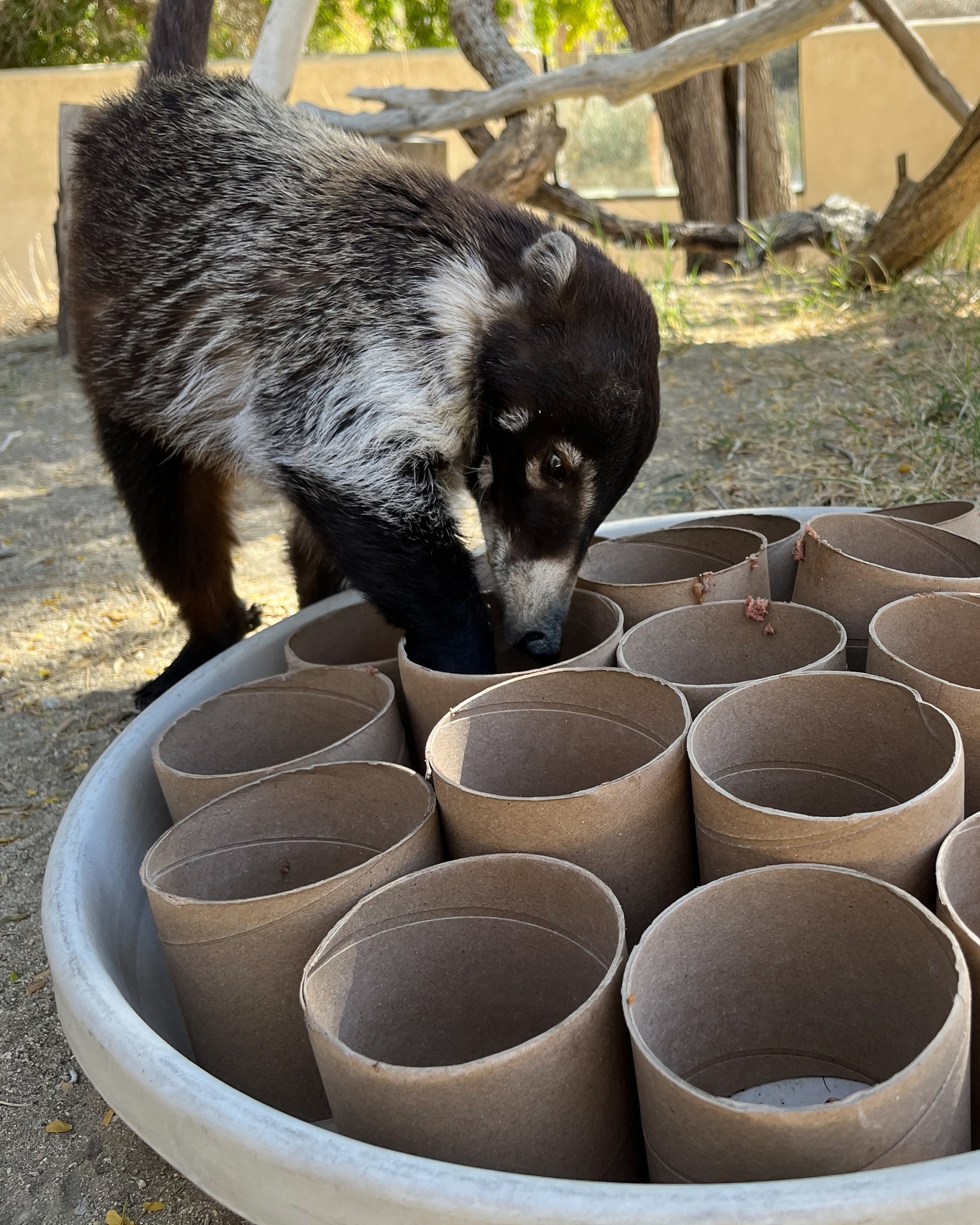- The intriguing behavior and hunting techniques of coatis, emphasizing their foraging habits.
- The importance of enrichment activities for captive animals, especially coatis, through puzzle feeders.
- The role of sensory skills in coati survival and feeding, focusing on their olfactory prowess.
- The broader implications of engaging animals in natural behaviors for conservation and zoo management.
- The contribution of naturalistic environments in maintaining the physical and mental health of zoo animals.
Coatis, members of the raccoon family, Procyonidae, are fascinating creatures known for their adept foraging skills. These remarkable animals, native to the dense forests of Central and South America, are characterized by their elongated noses and sharp, dexterous claws. Coatis use their acute sense of smell to locate food while their claws dig through the forest floor, searching for insects, fruits, and small vertebrates. "When in doubt, follow your snout" perfectly captures their instinctual reliance on their olfactory capabilities to navigate their environment.
The behavior of coatis offers a captivating example of animal adaptation and success in diverse ecosystems. In the wild, foraging is not just a way to find sustenance but a critical survival skill that determines an animal’s ability to thrive. Coatis use their noses as a primary tool, engaging in behaviors such as sniffing and probing to detect food hidden under layers of leaves and soil. The coati’s nose is a finely tuned instrument, capable of picking up scents with extraordinary precision, making them efficient hunters.
In zoos, replicating the natural foraging behaviors of coatis is crucial to their welfare and health. Enrichment activities, such as puzzle feeders, play a vital role in this process. These devices are designed to mimic the challenges coatis face in their natural habitats, encouraging them to exercise their foraging skills. For Lily, a coati residing in captivity, such enrichment activities keep her engaged, both physically and mentally. By using her sense of smell to locate the right feeding port and her paws to sift through substrate, Lily can experience a taste of her natural behavior, even within a controlled environment.
The inclusion of such activities in zoo management emphasizes the necessity of maintaining not only physical health but also emotional well-being in captive animals. Enrichment activities help stimulate their natural instincts, keeping them active and reducing stress or boredom. Providing opportunities for natural engagement is vital for animals like coatis, whose survival and overall health are intricately tied to their ability to perform instinctual behaviors.
Coatis serve as a prime example of the importance of sensory skills in the animal kingdom. Their survival is intricately linked to their ability to smell and manipulate their environment to locate food. The saying "When in doubt, follow your snout" becomes more than just a playful expression; it underscores a critical aspect of their daily life and survival strategy. This olfactory dominance enhances their foraging efficiency and adaptability, reflecting similar survival strategies used by other mammalian species.
In a broader conservation context, providing animals with environments that encourage natural behaviors is essential. It benefits the individual animals and contributes to larger wildlife conservation goals. By ensuring that animals like coatis can exhibit natural behaviors, zoos and conservation programs play an essential role in educating the public about wildlife and the importance of preserving natural habitats for future sustainability.
Naturalistic environments that simulate native habitats help preserve the behavioral patterns and mental states of animals in captivity. This approach goes beyond simple care; it fosters a deeper understanding of the species’ ecological roles and how they interact with their surroundings. For coatis, their role as natural foragers acts as a lesson in adaptability and resilience—traits that conservationists strive to encourage in managed wildlife populations.
In conclusion, the behavior and ecological strategies of coatis, with their keen sense of smell and knack for foraging, provide vital insights into the importance of sensory skills for survival and the enrichment of captive animals. By empowering coatis like Lily to follow their natural instincts, zoos and conservation programs can ensure a higher standard of care and foster a deep connection between animals and their human observers.
*****
Source Description
When in doubt, follow your snout! 🐽🪱
Coatis are natural foragers. They use their long noses to sniff out food and their paws to dig through leaves and debris — and this puzzle feeder is designed to encourage these instincts!🐾
Here, you’ll see Lily use her keen sense of smell to locate the right feeding port, push aside leaves and substrate, and work her way to the tasty reward — bugs and worms. (Yum 😋) Enriching experiences like this keep her engaged, active, and practicing her natural skills!
📸: Team Member, Natalie E.


